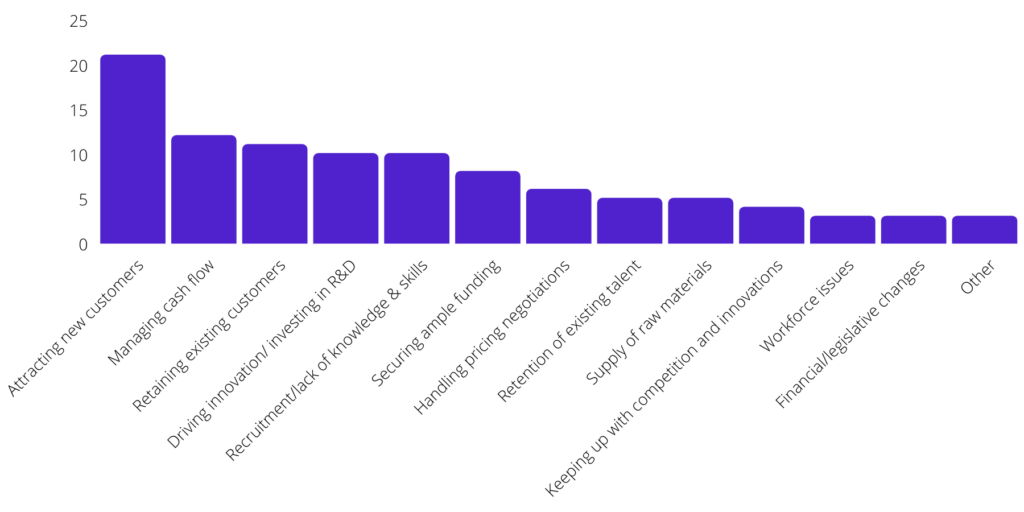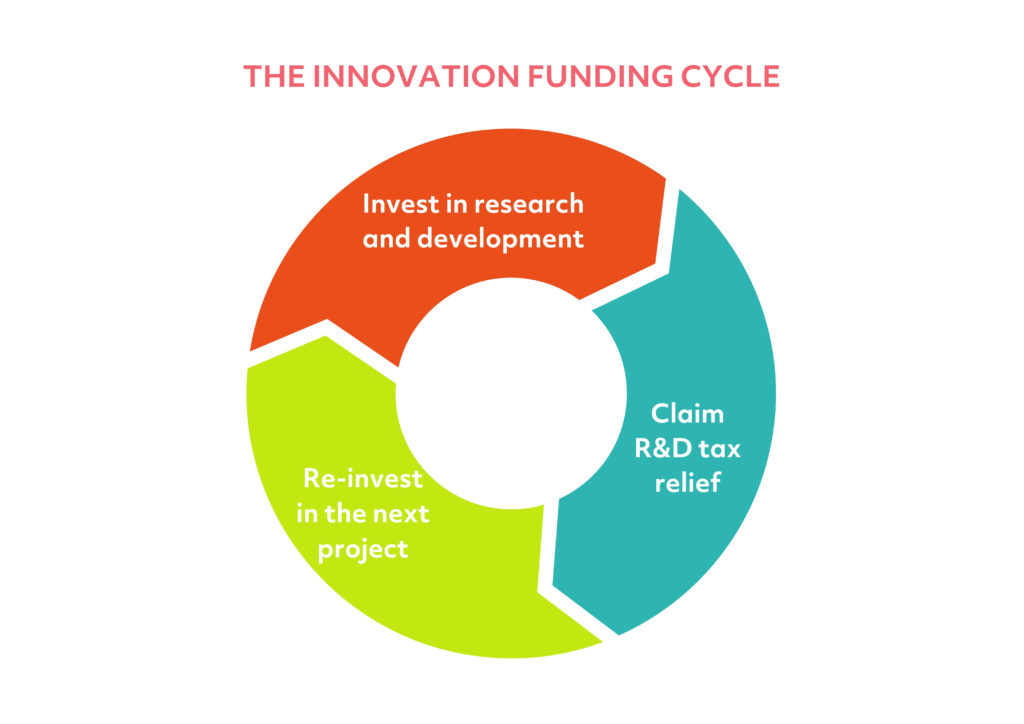Blog: Attracting new customers and keeping your existing ones happy
- Technology
- R&D Tax Credits
- UK Business
- 7 Min Read
In a recent survey of MPA clients, 32% said attracting new customers or retaining existing ones was likely to be their biggest challenge in the next 12 months.

So when you’ve done all the usual things – invested in marketing and advertising, offered discounts, maximised your network opportunities…what else can you do?
Here are a few ways you can look at customer attraction and retention differently, along with some tips you could try when the old ways are no longer working.
1. Re-research your customer
Hopefully, you’ll have a good picture of what your ideal customer looks like, along with their wants, needs and pain points. If you don’t, start there. If you do, do it again.
Why?
There’s evidence that the Covid-19 pandemic has expedited changes in several areas of shopping behavior, and what used to be true of your customer may no longer be. What’s more, the need your products and services once filled may now be different, or even non-existent.
According to Shopify, shopping for non-grocery items in a physical store, for example, dropped from 65% post-pandemic to 25% during lockdown. Their research suggests not all will return to their pre-pandemic habits – just 42% say they’ll go back to physical shopping only once the pandemic is truly over.
Shopper and consumer behaviours have never changed so rapidly, so whether you’re a B2C or B2B business make sure your customer perceptions aren’t causing you to miss opportunities to do things better, or differently, in response to these shifts.
2. Differentiate your offer
While for many categories purchase decisions will be made based on price alone, this isn’t the case for all sectors.
When it comes to IT service providers, for example, things like responsiveness, simplicity, and technological compatibility might be deal-breakers.
Decide what it is that will make you stand out from your competitors and invest in making the most of that thing.
If you need to redefine science or technology to help do this – for example, one of our clients had to build an entirely unique system in order to make their product compatible with a customers’ – then there’s a chance that you’ve undertaken research and development in the eyes of HMRC.
If that’s the case, as well as your newly distinctive product giving you a competitive advantage you could claim back some of the cost of making those improvements through the R&D tax relief scheme.
Does undertaking R&D increase market share?
The R&D tax relief for small and medium-sized enterprises is designed to encourage eligible businesses to invest in innovation by incentivising greater R&D expenditure.
The scheme works by reducing a company’s Corporation Tax liability (deduction claim), with the option of receiving a cash payment if the company is loss-making (credit claim).
In an evaluation of the SME scheme last year, findings suggest that this tax relief does have a positive impact on R&D expenditure nationally, as well as encouraging innovative behaviour, and positively affecting the turnover of businesses who invest in R&D.
84% of claimants surveyed in the evaulation compared to 68% of non-claimants said their market share either has or is expected to increase because of R&D expenditure.
3. Launch something new
R&D often leads to a new type of product or service, even if the original R&D was only done in response to a unique problem or need.
In fact, several of our clients have been able to claim R&D tax relief as a result of redeveloping products and processes to fit specific customer requirements, later going on to offer the newly developed solutions to other new customers.
This is doubly appealing, considering the original R&D can often be charged to the client as part of fulfilling their brief!
According to the Small Business Administration (US-based), this type of R&D – that which leads to development of a new product or service – is most common in sectors like pharmaceuticals, semiconductors, and computing technology.
R&D for growth
The savviest of businesses approach R&D and innovation as a whole as a way to grow, investing the money received from incentives like R&D tax relief back into further innovation, developing more new products, submitting a larger claim next year – and so on.

At a sector level, high R&D spend by one business or set of competitors who innovate quicker, or more, may result in less R&D spend by the sector overall. Other companies spend less, or don’t bother – presumably just choosing to adopt innovations that other businesses develop.
The choice is yours; do you wait for someone else to develop the next big thing and adopt it, probably too late, or do you do the leg work – supported by R&D tax relief – and reap the rewards?
4. Collaborate
When things become difficult and every sale becomes precious, it’s tempting to hold cards close to the chest and focus all your efforts on internal efficiencies and improvements. However, for some, this might just be compounding the issues.
In reality, opening yourself up to the idea of collaboration, though it might seem like just one more thing to worry about, has multiple benefits.
- it allows for the transfer of skills and knowledge
- gives you access to facilities and expertise
- and permits new ideas to bubble to the surface that would otherwise be out of reach
From brand and content partnerships to full-scale R&D collaboration, there is an opportunity for any business of any size to work together with someone, somewhere.
For innovation purposes, collaboration is also rewarded, with funding and tax reliefs specifically open to those who team with others or those hired to work on someone else’s projects.
- Subcontractor costs can be included in an R&D tax relief claim
- If you’ve worked with a larger company on a proportion of R&D for their project you can claim relief on your costs (through RDEC)
- Some Innovate UK grants like Smart Grants are only available to companies partnering with SMEs
5. Make it easy to stay and be there when they’re looking
This final point is obvious, but in this increasingly ruthless commercial environment, it’s worth reminding ourselves that it doesn’t take much for people to go elsewhere.
Between Brexit, Covid-19 challenges, ships getting stuck in canals and unpredictable weather wreaking havoc on natural resources, many sectors have experienced supply chain issues this past 12 months. Even service sectors have been affected – by reduced resourcing due to sickness and furlough, or increased demand, impacting capacity and/or quality.
All of this has compounded the tendency of shoppers, consumers, purchasers to simply go somewhere else if you cannot give them what they need when they need it.
Nearly half (49%) of the more than 2,000 U.S. and U.K. consumers surveyed by Accenture said they changed solutions providers in at least one industry in the past year due to poor service.
Look at your customer journey pre-and post-sale, identify the weaknesses, and fix them.
Make it as easy as possible for your existing customers to stay with you and be front and centre when new ones go looking for alternatives.
As more companies come out of Covid-induced hibernation, competition will naturally start to ramp up again. Now is the time to get the basics right, build on what you know, and explore some things you don’t.
A shining light
Here at MPA, we’re an innovation-first kind of company. We believe that those who push boundaries, drive knowledge and capability, and face challenges head-on are the ones who will succeed. We also know that can sound really daunting.
If you’re not sure where your next stage of growth will come from, how you’re going to fund your next big idea, or how to develop a brand-new strategy post-pandemic, get in touch and we’ll help you find a way.
Contact us today
